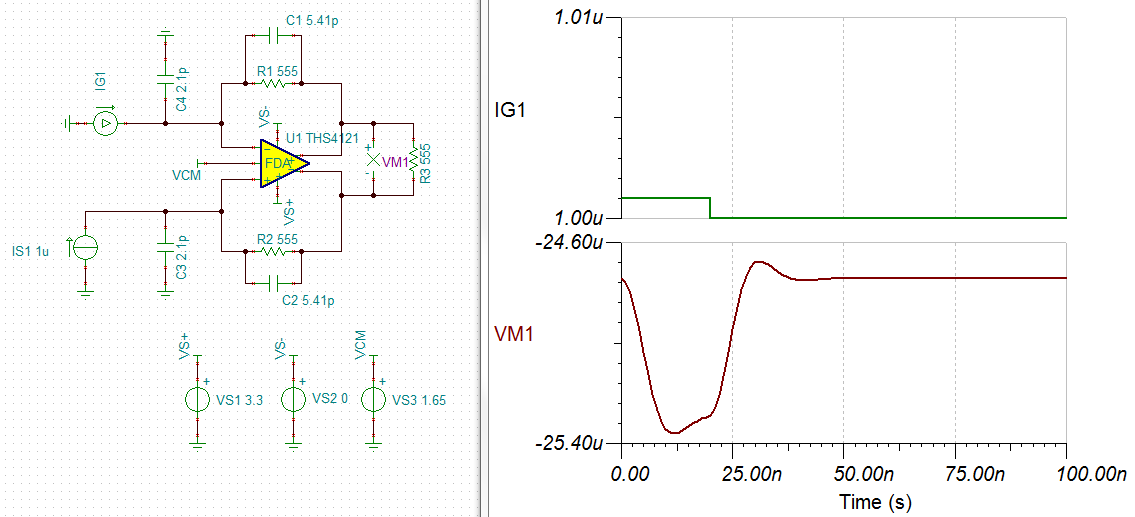Other Parts Discussed in Thread: TINA-TI, LMH5401, OPA847
Hi team,
The customer designs a TINA circuit for THS4121. For his simulation circuit, it exists the shock.
For more detail information, please check the attachment.
Is the customer's simulation circuit and the simulation result correct?
If it is correct, would you suggest how to solve the shock issue?
If it is incorrect, would you send me a correct simulation circuit for the customer's application?
Best Wishes,
Mickey Zhang
Asia Customer Support Center
Texas Instruments



